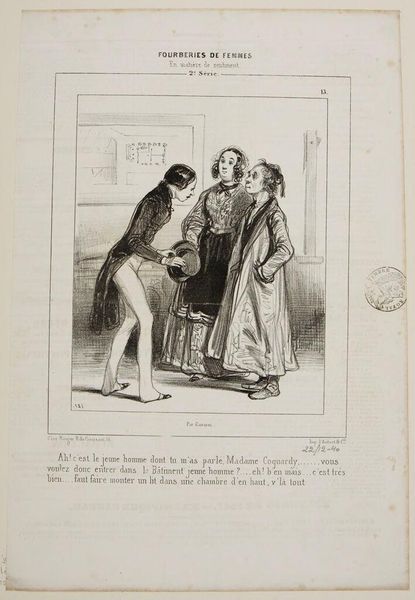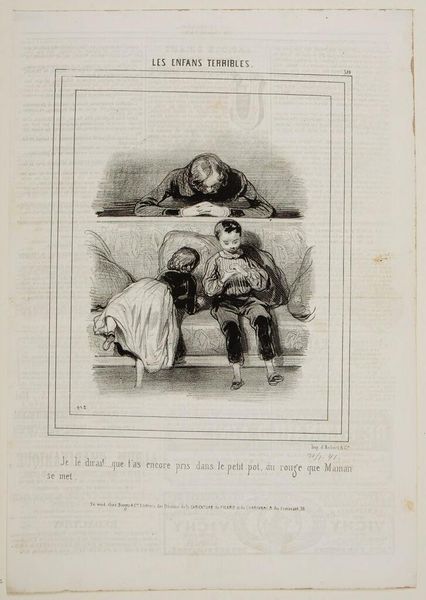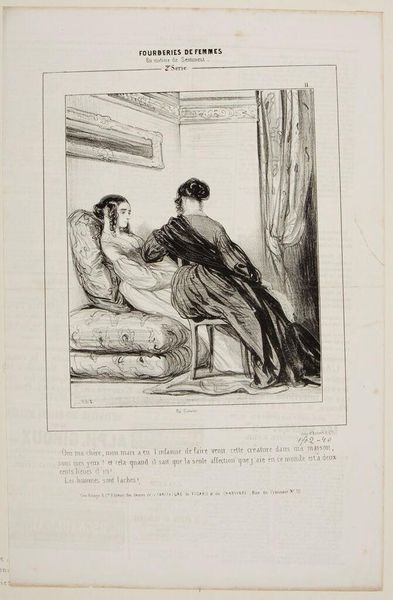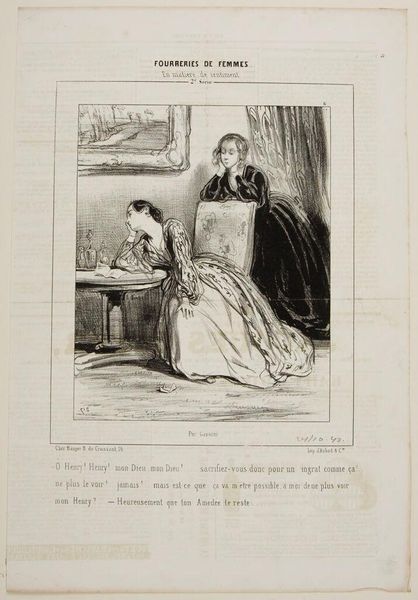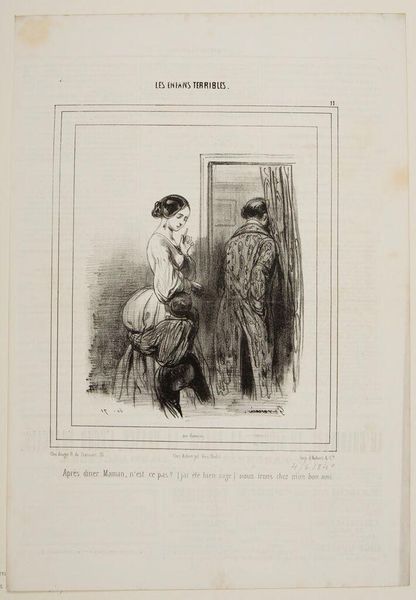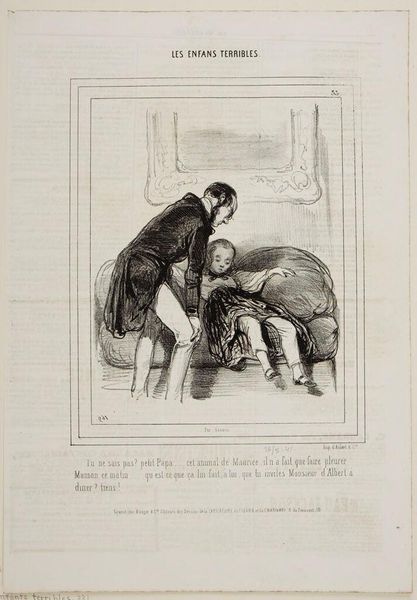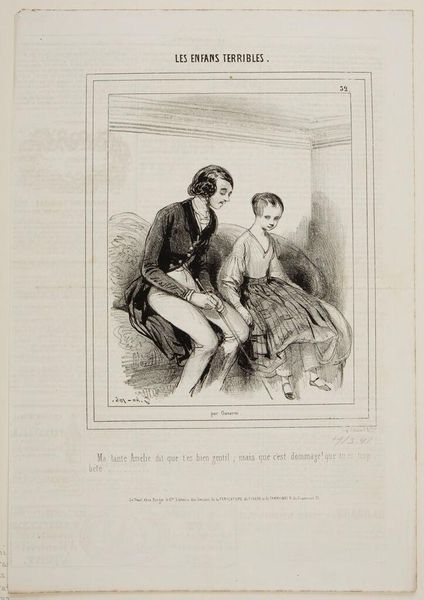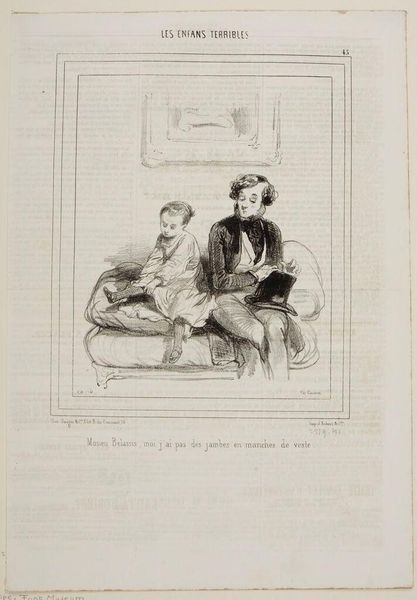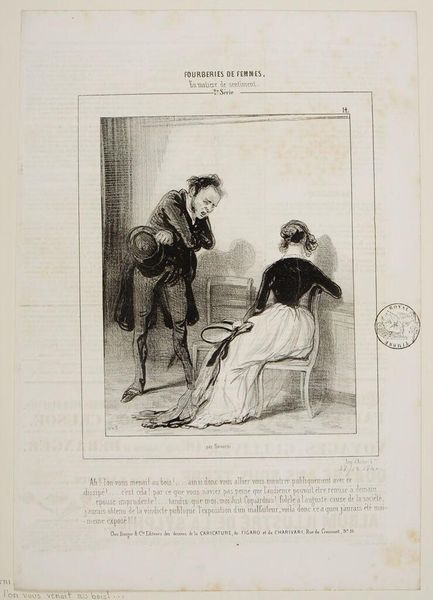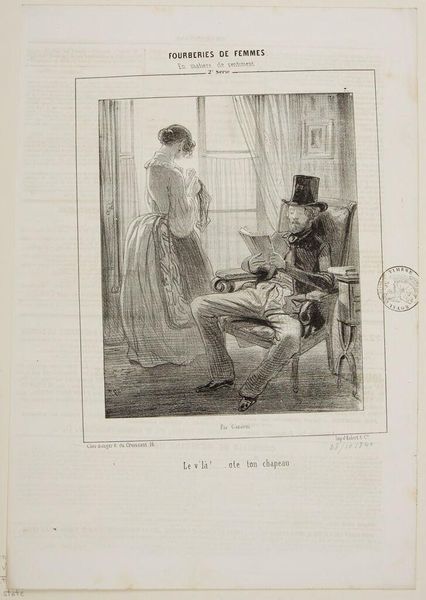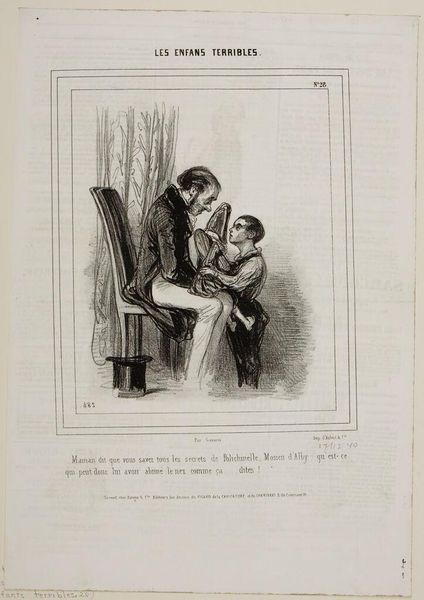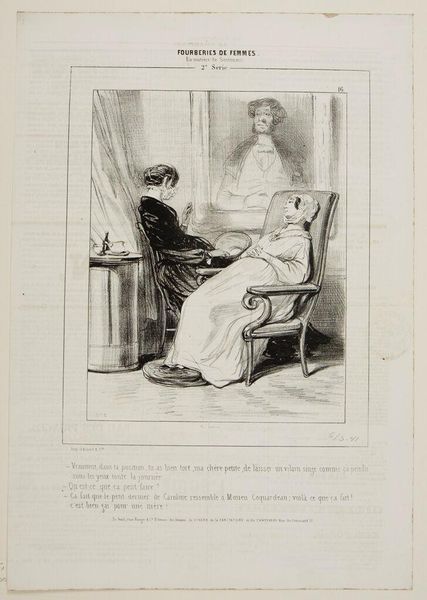
My little one, go to Mama, and get her up as soon as you come back c. 19th century
0:00
0:00
Copyright: CC0 1.0
Editor: This print by Paul Gavarni, titled "My little one, go to Mama, and get her up as soon as you come back," depicts a woman and child in what seems like a domestic interior. The scene feels intimate, almost staged. What do you see in this piece from a historical perspective? Curator: This image, part of a series called "Les Enfants Terribles," critiques the social norms surrounding family life and the rising bourgeoisie in 19th century France. Gavarni uses humor to expose the tensions between idealized motherhood and the realities of domesticity. Notice how the child’s posture suggests a staged performance, reflecting a societal pressure on families to present a perfect image. Editor: So, it's not just a simple family scene, but a commentary on social expectations? Curator: Exactly. Gavarni’s work often highlights the performative aspects of social roles and how they are shaped by public perception. The very title, referencing "terrible children," is steeped in irony. What do you make of that? Editor: It suggests that even within the seemingly private sphere of the family, there are societal pressures at play, creating a complex and perhaps uncomfortable dynamic. I see it now. Curator: Precisely. Understanding the social context helps us decode the layers of meaning embedded in this seemingly simple image.
Comments
No comments
Be the first to comment and join the conversation on the ultimate creative platform.
